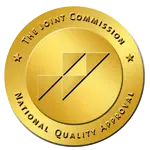Fentanyl misuse is a leading cause of death among individuals with substance use disorder (SUD). According to the National Institute on Drug Abuse (NIDA), “Fentanyl and other synthetic opioids are the most common drugs involved in overdose deaths.” Early intervention and treatment are essential. Some individuals struggling with fentanyl addiction may hesitate to reach out for help if they don’t know what to expect from detox treatment. Pathways Recovery Center specializes in medically assisted detox and offers residential treatment to individuals in various stages of recovery. Clinicians help clients detox from fentanyl using evidence-based methods.
Detoxing from fentanyl misuse is easier when individuals have access to medical care and support during withdrawal and the first stages of recovery. However, how long it takes to detox from fentanyl varies significantly depending on various factors, including:
The clinical team at Pathways Recovery Center uses detailed admissions assessments to determine which treatment options best fit each client. Most people with SUD involving fentanyl require medication-assisted treatment (MAT) to reduce dangerous side effects during detox from fentanyl. According to the Centers for Disease Control and Prevention (CDC), “MAT is a comprehensive way to address the needs of individuals that combines the use of medication (methadone, buprenorphine, or naltrexone) with counseling and behavioral therapies.” Detox from fentanyl usually involves multiple therapeutic tools.
Fentanyl is a synthetic opioid primarily prescribed for pain relief. Illicit versions of fentanyl are also sold on the street. The drug is 50 to 100 times more potent than morphine and highly addictive. Fentanyl has severe side effects, and many people who misuse the drug experience significant injury or illness. According to the CDC, “Over 150 people die every day from overdoses related to synthetic opioids like fentanyl.”
Fentanyl affects a person’s physical and psychological health. If used as prescribed, the analgesic causes people to feel relaxed and euphoric and reduces pain symptoms. However, misusing prescription fentanyl or taking illegal versions of the drug increases the risk of severe side effects or death. In addition, changes to the brain caused by chronic fentanyl misuse can contribute to major depression and other mental health issues, including suicidal ideations.
Being able to recognize the signs of a potential fentanyl overdose saves lives. According to the previously mentioned article by the CDC, the following are some things to look for:
- Small, constricted ‘pinpoint pupils’
- Falling asleep or losing consciousness
- Slow, weak, or no breathing
- Choking or gurgling sounds
- Limp body
- Cold and/or clammy skin
- Discolored skin (especially in lips and nails)
Anyone can develop an addiction to fentanyl, regardless of age, gender, or socioeconomic status. However, individuals with chronic pain, severe illness or injury, and a history of mental health disorders or SUD have an increased risk of becoming dependent or addicted to fentanyl. In many cases, people who misuse illegal versions of the drug are self-medicating to cope with chronic health issues affecting their quality of life.
Some of the primary risk factors for developing SUD involving fentanyl include:
Fentanyl misuse has the potential to cause serious health complications. According to news site CalMatters, “Fentanyl can kill at 2 milligrams, depending on a person’s body size, tolerance and past usage.”
Everyone has a unique experience during recovery and treatment. However, detox from fentanyl generally involves the following stages:
Below are brief explanations for each stage and how they help people establish and maintain sobriety.
Clients are interviewed by the clinical team and undergo comprehensive assessments during the intake process. Screening tools are used to ensure an accurate diagnosis and gather essential information. A physical exam and drug testing are generally part of the intake process to establish a starting point for treatment.
MAT allows people addicted to dangerous substances to slowly taper off, reducing the risk of severe symptoms and side effects. A safe substance gradually tapers the individual from dependency to sobriety. In many cases, MAT takes only a week to 10 days. During that time, clients receive medical care and psychological support.
Client stabilization prepares people to transition from detox into outpatient or residential treatment programs. Nurses are available to help clients manage their withdrawal symptoms and administer medications as necessary. Psychotherapy, prescription medications, and peer support help people reach a point where they are mentally and physically stable.
Detoxing from fentanyl is one of the first steps in recovery. Once clients achieve stability and complete the detox process, they transition to the next stage of treatment. Fentanyl is a dangerous substance with a high risk of relapse. Most people recovering from fentanyl misuse transition into a residential treatment program to ensure they receive more comprehensive support and services.
People diagnosed with SUD involving fentanyl generally have multiple complicating factors affecting their treatment and recovery. Clinicians collaborate with clients to determine how to tailor treatment to their unique needs and preferences. Peer support and evidence-based treatments help clients establish healthier routines and behaviors.
Multiple factors affect how long it takes a person to detox from fentanyl misuse, including:
Every person reacts differently to detox and withdrawal. Individuals with stronger support systems and healthy coping skills often experience less severe symptoms compared to people with no support system and maladaptive coping mechanisms.
Fentanyl misuse directly affects the brain and how people cope with stressors during recovery. According to NIDA, “Fentanyl works by binding to the body’s opioid receptors, which are found in areas of the brain that control pain and emotions.” In addition, “Its effects include extreme happiness, drowsiness, nausea, confusion, constipation, sedation, tolerance, addiction, respiratory depression and arrest, unconsciousness, coma, and death.” The severity of potential side effects makes it essential for people in recovery to find services and coping methods that work for them and keep them safe.
Most clients benefit from doing the following during detox and early recovery:
Clients rely on their case managers and clinicians to ensure they have access to the resources they need to heal. Fentanyl may cause a wide range of physical or cognitive issues. The care team uses individualized care to reduce the risk of relapse and stop severe symptoms from complicating recovery.
Pathways Recovery Center offers medically assisted detox services to some clients with SUD. Substances like fentanyl present a serious risk to a person’s overall health and well-being. However, not everyone requires MAT. The care team will determine which clients may benefit from these services.
According to the journal Neuropsychopharmacology, “Fentanyl is at least 20-fold more potent than heroin in causing brain hypoxia.” In addition, “Fentanyl also induces an acute state of unconsciousness, fully blocking motor responses to external and internal stimuli. Therefore, the inability to control one’s body, particularly to maintain respiratory function, could increase the likelihood of asphyxiation after fentanyl intake.” Medical supervision reduces the risk of hypoxia and other severe side effects of withdrawal from fentanyl.
People who choose to attend detox treatment have access to the following:
Having a team of addiction recovery experts available 24/7 reduces the risks associated with detox and withdrawal. The care team at Pathways Recovery Center uses a holistic approach to treatment that targets physical, mental, and spiritual health. Services are customized to meet the needs and preferences of clients and their families to provide a safe and comfortable space for healing.
Clinicians ensure all clients have access to the level of care they need to taper off fentanyl and other substances safely. Clients collaborate with their care team during detox from fentanyl to determine what form of MAT will provide them with the safest detox from fentanyl.
Prescription drug options for MAT include:
Everyone has a different experience during detox and recovery. The clinical team at Pathways Recovery Center works with clients to ensure the best possible outcomes. Clients are guided through early recovery by addiction recovery experts with decades of experience helping individuals and families heal from SUD.
Most clients recovering from fentanyl misuse have co-occurring conditions. Residential treatment programs allow people with multiple disorders to receive dedicated care and more comprehensive services. Even individuals who have no co-occurring conditions benefit from attending residential treatment after detox.
Residential treatment programs provide clients with a structured community environment where they have access to essential services, peer support, and a clinical team. Fentanyl may cause severe cravings, and people in early recovery benefit from spending all their time in a drug-free space with limited triggers or distractions. The first few weeks of treatment after detox are essential for establishing healthy coping skills and sustainable routines to prevent relapse.
Residential treatment programs offer clients the following:
Clinicians work with each client and their family to determine the best approach to treatment during residential care. The goal is to successfully prepare clients to maintain sobriety and lifestyle changes after leaving the program. Transitioning from detox to residential care allows people to focus more fully on their recovery without the distractions that come with staying at home.
Residential programs support long-term recovery by giving clients the time and space to fully process their condition and learn the necessary skills to maintain positive mental health. According to the journal Psychiatric Clinics of North America, some “common ingredients to effective addiction treatments [include] enhancing and maintaining motivation, teaching and learning new coping skills, restructuring the social environment, changing conditioned responses, developing understanding of social norms, and enhancing self-efficacy.” Pathways Recovery Center offers clients the tools and resources to effectively manage their condition and prepare for long-term sobriety.
Misconceptions about the potential side effects of fentanyl detox and withdrawal impact whether people reach out for help and how they react to treatment. Stigmas, misinformation, and misconceptions surrounding substance misuse and treatment may cause some individuals and families to avoid participating in recovery programs. However, professional mental health and addiction treatment programs remain the safest way to detox from fentanyl and establish a sober life.
Stigmas and misinformation are common in communities around the country. Even well-meaning loved ones may have ignorant or inaccurate views on mental health, SUD, and treatment programs. Families may also pressure people to avoid treatment if they believe misinformation about fentanyl detox and withdrawal.
Some of the most common misconceptions about fentanyl detox include the following:
Misconceptions like the ones listed above cause some people to think they can quit fentanyl cold turkey without the help of a care team. Often, unsupervised detox from fentanyl leads to relapse and unintentional overdose. People can die during unmonitored fentanyl detox. In addition, they often experience profound side effects if they don’t have the benefit of MAT.
Intense cravings, vomiting, and aspiration are common side effects that may lead to death or severe illness. According to MedlinePlus, “Most opiate overdose deaths occur in people who have just detoxed. Withdrawal reduces the person’s tolerance to the drug, so those who have just gone through withdrawal can overdose on a much smaller dose than they used to take.”
Detox treatment is the first step toward sobriety, not a cure. Pathways Recovery Center provides clients with information about the realities of substance and recovery to ensure they avoid relying on dangerous misconceptions. Professional addiction treatment is necessary to ensure people detoxing from fentanyl and other substances have the supervision and support of a dedicated medical team.
Individuals in recovery must rely on their care team to guide them safely through the detox and withdrawal stages of recovery. During detox from fentanyl, clinicians prioritize helping clients achieve emotional and physical stabilization to ensure a smooth transition from medically assisted detox to ongoing treatment.
Individuals in treatment for fentanyl addiction benefit from participating in detox and residential care programs. Professional addiction and mental health treatment reduces the risk of relapse and the severity of symptoms. Without dedicated medical treatment, people have an increased risk of severe injury, illness, or even death during detox.
A tailored continuum of care provides the best outcomes for most individuals by doing the following:
Recovery from SUD is possible with the help of the dedicated team at Pathways Recovery Center. Clients start their recovery by undergoing comprehensive testing and working closely with the clinicians to create a detailed and personalized care plan for early recovery. How long it takes to complete detox from fentanyl depends on various factors, including how long the drug was misused, severity of symptoms, and history of treatment or relapse. Early intervention and treatment reduce the number of symptoms and their severity during detox.
Individuals and families are often unaware that quitting fentanyl cold turkey may cause severe illness, injury, or death. Professional mental health treatment is the best way to avoid potential relapse or other complications during detox. Pathways Recovery Center offers detox and residential rehabilitation programs for individuals with SUD and co-occurring mental health disorders. Fentanyl addiction can be managed and overcome using evidence-based and alternative holistic therapies. Clinicians use peer support, medication-assisted treatment, psychotherapy, and other tools to help clients and their families heal from the effects of fentanyl misuse. To learn more about the programs and services at Pathways Recovery Center, contact our office today by calling us at (888) 771-0966.








